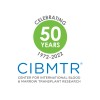
Sorafenib, Busulfan and Fludarabine in Treating Patients With Recurrent or Refractory Acute Myeloid...
Recurrent Acute Myeloid LeukemiaRefractory Acute Myeloid LeukemiaThis phase I/II trial studies the best dose of sorafenib when given together with busulfan and fludarabine in treating patients with acute myeloid leukemia that has come back or does not respond to treatment and who are undergoing donor stem cell transplant. Sorafenib may stop the growth of cancer cells by blocking some of the enzymes needed for cell growth. Drugs used in chemotherapy, such as busulfan and fludarabine, work in different ways to stop the growth of cancer cells, either by killing the cells, by stopping them from dividing, or by stopping them from spreading. Giving sorafenib with busulfan and fludarabine may work better in treating patients with recurrent or refractory acute myeloid leukemia.

The Efficiency of CAMS (Chinese Academy of Medical Sciences)-2016 Trial for Pediatric Acute Myeloid...
Acute Myeloid LeukemiaThe purpose of this study is to evaluate that whether the AML (acute myeloid leukemia)-CAMS (Chinese Academy of Medical Sciences)-2016 regimen, includes risk-stratified therapy and the use of Dasatinib in CBF (Core binding factor)-AML, can improve the outcome in childhood AML.

A Study of CD371-YSNVZIL-18 CAR T Cells in People With Acute Myeloid Leukemia
Refractory Acute Myeloid LeukemiaRelapsed Acute Myeloid Leukemia4 moreThe purpose of this study is to find out whether CD371-YSNVZ-IL18 CAR T cells are safe, and to look for the highest dose of CD371-YSNVZ-IL18 CAR T cells that cause few or mild side effects in participants.

VA vs DA for ND Hig-risk AML
Acute Myeloid LeukemiaThis is an open-label, multicenter, phase 2b, randomized study aiming to compare the efficacy and safety of venetoclax plus azacytidine Versus daunorubicin plus cytarabine (conventional 7+3 regimen) in adult acute myeloid leukemia (AML) patients with adverse risk featuress. Participants will be 1:1 randomly assigned to the VA and DA groups. Once remission was achieved, consolidated chemotherapy will be performed and allogeneic hematopoietic stem cell transplantation is strongly recommended. After completion of the study intervention, participants will be followed-up every 1 to 2 months for up to 2 years.

Fludarabine, Cytarabine, and Pegcrisantaspase for the Treament of Relapsed or Refractory Leukemia...
Blast Phase Chronic Myelogenous LeukemiaBCR-ABL1 Positive12 moreThis phase Ib trial investigates the side effects and best dose of pegcrisantaspase when given together with fludarabine and cytarabine for the treatment of patients with leukemia that has come back (relapsed) or has not responded to treatment (refractory). Pegcrisantaspase may block the growth of cancer cells. Chemotherapy drugs, such as fludarabine and cytarabine, work in different ways to stop the growth of cancer cells, either by killing the cells, by stopping them from dividing, or by stopping them from spreading. Giving pegcrisantaspase in combination with fludarabine and cytarabine may work better in treating patients with leukemia compared to the combination of fludarabine and cytarabine.

Venetoclax + Cytarabine Versus Idarubicin + Cytarabine : Efficacity Assessment as Post-remission...
Acute Myeloid LeukemiaFor the FILO group, the standard of care for induction chemotherapy of elderly fit patients with AML is represented by the combination of Cytarabine, Idarubicin and Lomustine. The superiority of this combination was confirmed in a larger prospective study the LAMSA-2007. This induction treatment, followed by six courses of consolidation (Idarubicin and Cytarabine) followed then by a period of 6-month maintenance therapy, allows up to 80 % of remission, and a RFS of 46 % at 2 years. The aim of the study is to assess the efficacy on outcome of Venetoclax combined with Cytarabine versus Idarubicin combined with Cytarabine administered as post-remission therapy to elderly patients with acute myeloid leukemia in first complete remission (CR) following induction chemotherapy.

Venetoclax + Azacitidine vs. Induction Chemotherapy in AML
Acute Myeloid LeukemiaThis research is being done to assess the therapeutic activity of a promising combination (azacitidine and venetoclax) versus conventional cytotoxic chemotherapy in induction-eligible patients with acute myeloid leukemia. This study involves the following: Venetoclax and azacitidine (investigational combination) Cytarabine and idarubicin or daunorubicin (per standard of care) or Liposomal daunorubicin and cytarabine (per standard of care)

HLA-Mismatched Unrelated Donor Hematopoietic Cell Transplantation With Post-Transplantation Cyclophosphamide...
Acute Lymphoblastic LeukemiaAcute Myelogenous Leukemia6 moreThis is a prospective, multi-center, Phase II study of hematopoietic cell transplantation (HCT) using human leukocyte antigen (HLA)-mismatched unrelated donors (MMUD) for peripheral blood stem cell transplant in adults and bone marrow stem cell transplant in children. Post-transplant cyclophosphamide (PTCy), tacrolimus and mycophenolate mofetil (MMF) will be used for for graft versus host disease (GVHD) prophylaxis. This trial will study how well this treatment works in patients with hematologic malignancies.

A Phase 1 Study of SH1573 Capsules in Subjects With Refractory or Relapsed Acute Myelogenous Leukemia...
Acute Myelogenous LeukemiaAn open label single-arm clinical trial to evaluate the safety, tolerability, PK, PD, and preliminary efficacy of SH1573 in subjects with advanced relapsed, refractory acute myelogenous leukemia that harbor an IDH2 mutation.

Pharmacokinetic and Safety Study of MRX-2843 in Adolescents and Adults With Relapsed/Refractory...
Acute Myeloid LeukemiaAcute Lymphoblastic Leukemia1 moreThis is a Phase I, open-label, non-randomized, dose escalation study in adolescents and adults with relapsed/refractory acute myeloid leukemia, acute lymphoblastic leukemia, or mixed phenotype acute leukemia. Patients will receive continuous oral MRX-2843 in 28 day cycles at predefined dose cohorts.
